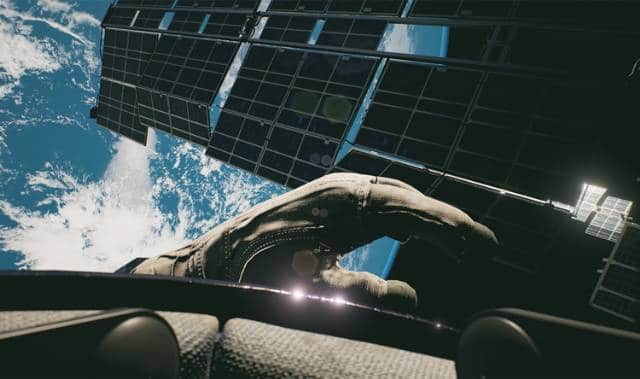In a few seconds, however, we understand that something is wrong , that the ground team is not telling us everything: the false dismay at discovering the empty station has caused some suspicion, but there are lives in the ball so the priority is now to find the crew.
Do not miss the way we think our notebook collecting the targets to complete, while pressing a button directs the camera to the correct direction. The latter is perhaps the most essential feature of Outreach’s orientation : 360 degree fluctuation is difficult to understand the right path, both when we are in a sterile and standardized space station, and when outside the background is a sky of indefinite stars. The sense of disorientation is remarkable from the outset, but once it reaches the top, it also accompanies a deliberately limited view when moving between the handles.
As already mentioned, Volkov can only read pushes forward and have no chance of correcting the trajectory, so mistaking during the space walk can only have one result: getting lost in space; that is because we are too far away from the handles or because we collide with the protrusions of the base that push us outward, the tremendous sense of help lessness as we are increasingly farther away from any touch and the terror of the protagonist trying to stretch the hands while losing in the deep space is to say the least disturbing, while no less is the feeling from which Volkov is assaulted as finding the clues left by the crew begins to doubt the good intentions of the ground team.
Conspiracy or Tragedy?
According to Pixel Spill, the small but enthusiastic English development team behind the game, the player will find the story exactly as if he were in Volkov; clue after the clue, will have to get an idea of what has happened and decide whether to continue trusting the team that guides him or the reality that in the meantime is taking shape in his mind.
The final seems to be different depending on how the adventure has taken place but will surely put the player in front of a choice that will completely change the sense of the story in one way or another.
From this and from all else, one understands how the goal of Outreach is to recreate a psychological thriller based on the general idea that in those years, characterized by a cold war still in action and a ruthless competition in the space race, reality was lost in what was being communicated by the media and what was brought to the fore (often in the same manner as incorrect) by the conspiracy theories.
Truth did not seem to be a public right, but an element to be shaped or rewritten by world superpowers, and Volkov’s story seems to be about this.
The 1980’s atmosphere, which was recreated faithfully through the design of suits, terminals, communication systems, and so many other elements, helps to immerse yourself in this corrupt reality, and makes the technical shortcomings of the gamealmost unnoticed , such as a hostile camera, hands not visible in some steps and non-optimization for virtual reality, technically working but not advised by the developers themselves for the excessive motion sickness caused.
It’s a shame though, because as Outreach is an interesting title it has its faults and the VR mode would help move on. The same sprawling, distressing at first, became awesome after another minute, moving slowly and gently from one handle to the other,in a long and static path where fear is not so much death but having to start over again can not endure a banal gameplay.
For the work done, the few Pixel Spill guys deserve applause and the game concept, far from Gravity’s frenzy, and closer to the contrast between The Martian’s loss and hope, is really interesting.
There are obvious defects linked more to gameplay and level design than to narrative style, so we hope the latter can astonish everyone and equalize the technical gaps.
Until the final release of the game, expected by the end of 2017, we cross our fingers.


